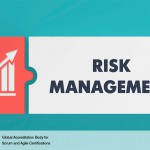Every project, irrespective of scale and size, is subjected to risk. Even a smallest of project involves some amount of risk. This is one of the unique characteristics of a project. So, when we work on a project, we do risk management side by side. ‘Risk’ often has a negative connotation and we usually think risks are bad. But in project management it is described as “an uncertain event which if happens will have a positive or negative impact on the project objectives.” So, we try to maximize the impact and probability of positive risks (also called as ‘Opportunity’) and try to reduce or remove the negative risks (also called as ‘Threat’). In project risk management, we do undertake different activities to manage different types of risks based on the probability, proximity, effect and impact of the risks. Let’s focus on the negative risks in this article. Projects are usually riskier at the beginning of the project because of amount of uncertainties involved. Many a times, the customer does not have clear ideas about the requirement which multiplies the uncertainties. ‘Scrum’ framework of managing project is extremely suitable in this scenario. Being an Agile, iterative process, the Scrum framework inherently minimizes risk. The following Scrum practices facilitate the effective management of risk:
1. Flexibility reduces business-environment-related risk
Risk is largely minimized in Scrum due to the flexibility in adding or modifying requirements at any time in the project lifecycle. This enables the organization to respond to threats or opportunities from the business environment and unforeseen requirements whenever they arise, with low cost of change as compared to traditional project management methods.
2. Regular feedback reduces expectations-related risk
Being iterative, the Scrum framework gives ample opportunities to obtain feedback and set expectations throughout the project lifecycle. This ensures that the project stakeholders, as well as the team, are not caught off guard by miscommunicated requirements.
3. Team ownership reduces estimation risk
The Scrum Team estimates and takes ownership of the Sprint Backlog Items, which leads to more accurate estimation and timely delivery of product increments
4. Transparency reduces non-detection risk
The Scrum principle of transparency around which the framework is built ensures that risks are detected and communicated early, leading to better risk handling and mitigation. . Moreover, when conducting Scrum of Scrum Meetings, Impediments that one team is facing currently can be deemed a risk for other scrum teams in the future, and that should be recognized in the Updated Impediments Log.
5. Iterative delivery reduces investment risk
Continuous delivery of value throughout the Scrum project lifecycle, as opposed to the product being delivered at the end of the project as in traditional project management methods, reduces investment risk for the customer.
Reference: A Guide to the Scrum Body of Knowledge (SBOKTM Guide) by SCRUMstudy









